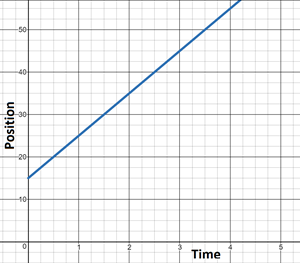In this lab we study a vehicle that moves at a constant speed.
Here we discuss the lab results and develop a general mathematical model for motion at constant velocity.
My friends at TheUniverseAndMore.com create free games. There are two that help you get an visceral feel for constant velocity graphs, depending on what device you're using to access these lessons.
1) Action Graphing, which is iOS only (iPad, iPhone, etc) available free on the app store.
2) The Super Ultimate Graphing Challenge, which is a flash game playable on computers. Android doesn't support Flash from the Play Store, but you can probably install it manually and play it on android tablets or phones.
There is one video for iOS (Action Graphing) and one for The Super Ultimate Graphing Challenge (flash for browsers and Android).
Work does have 4 letters, but it's hardly a dirty word. In fact, this digitally downloaded paper is squeaky clean with learning excitement. Or something like that.
Please read the reading and do the worksheet before watching the video. This video reviews the answers to the worksheet and you'll learn much more if you try to do your very best before watching it.
A fun little test to make sure you are getting the hang of what we've been doing so far. The answer video is posted as an attachment.
Position and velocity vs time graphs

Given a position vs time graph, can you describe the object's motion, determine its average velocity, write a mathematical model, and use the model to determine (extrapolate) its position at a later time?
Velocity vs time graphs and displacement
Multiple representations of motion
Review Sheet
Lernsys doesn't allow you to put pictures or anything besides text for the questions, so attached to this item is the actual test. The official test thing will basically just auto-grade your questions to give you feedback.
